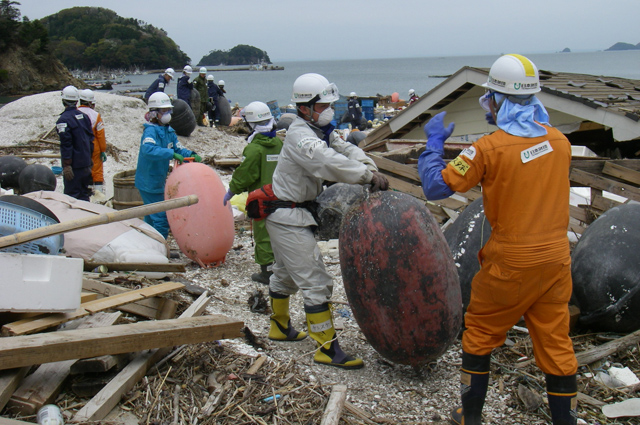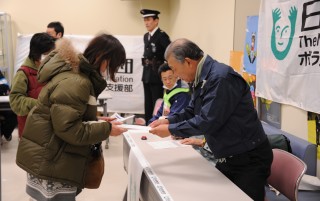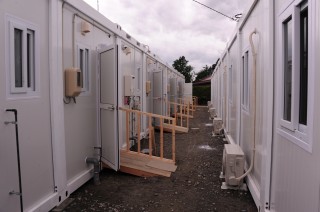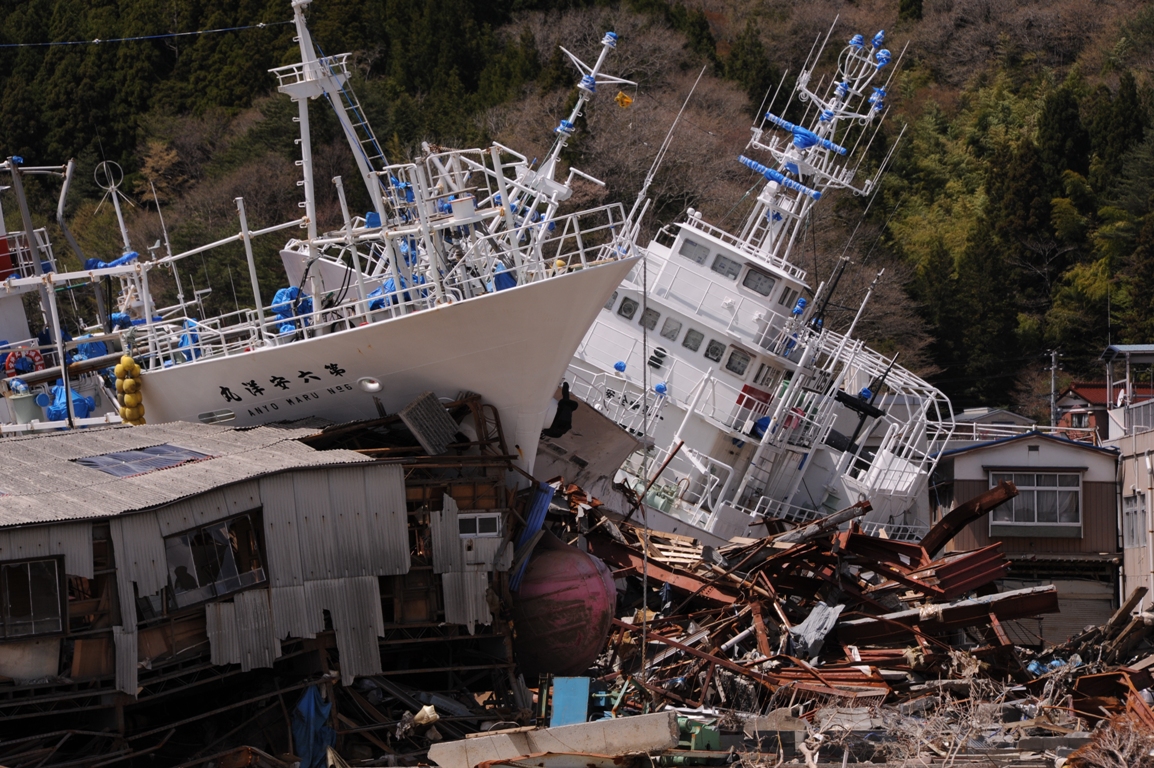The Nippon Foundation—a huge non-profit organization that directs motorboat racing revenue into philanthropic activities—has not only been providing financial aid to survivors of the 2011 Tohoku earthquake and tsunami, but has also introduced a number of initiatives aimed at improving living conditions in the area. On the eve of the third anniversary of the disaster, Weekender caught up with Chairman Yohei Sasakawa to hear exactly what they have been doing and what he believes needs to be done in the future.
By Matthew Hernon
Nippon Foundation has a lot of experience in providing aid to earthquake victims, but this catastrophe was on another scale altogether. What was your initial approach to such a huge disaster?
I remember—following a huge air raid during WWII—how difficult it was to survive without cash, so the first thing I decided to do was to provide ¥50,000 for any family who had lost a family member. This way they could at least honor the spirit and memory of those who had passed away or were missing.
Initially we didn’t have any data to rely on so we were concerned about con artists coming back more than once to ask for money, but after analyzing the list of names we saw that there had been no duplications. In fact we even had examples of people returning the cash because they had found a loved one alive several days later. There was also one couple who both accidentally picked up the money from different locations; when they realized they had received ¥100,000 one of them drove for 40 minutes in order to give half of the money back. I was really moved when I heard this.
After the initial cash injection how did your strategy change in terms of how you provided aid?
In the first few days people were just happy to be alive and therefore prepared to eat anything, no matter how monotonous. After a while, though, they started to get tired of eating instant noodles, so on one occasion we took a huge supply of ramen that had been sent and moved it to Kumano, an area that had been badly flooded and needed that kind of food. At the same time we tried to provide a greater variety of food in the Tohoku region.
It’s not just about providing aid, but providing the right kind of aid. We sent experts once a week to check on different evacuation shelters to have a look at the situation and analyze what was needed. Some were really lacking toilets so we brought prefabricated ones from Tokyo. Pregnant ladies weren’t being sufficiently provided for so we drove 2,000 of them to the capital so they could give birth in a safer environment. As time went by, parents worried more and more about their children’s education, and how far they had fallen behind in their studies, so we sent college students from Tokyo to tutor them.
Using our surveys we could identify specific issues at different camps. For example we found that some families with special needs children felt uneasy about what others might think if their children became agitated during the night. We therefore decided to build camps for those families. Another big issue was communication: in addition to supplying food and medicine, you have to let people know where it is. We set up 20 locations where short-wave radio services were made available and distributed 45,000 radios that we received from China.
How would you describe the current situation in Tohoku?
It is very unfortunate but 240,000 people are still in temporary housing. One of the biggest reasons for this is that local and central authorities have for some reason decided that it is too dangerous for them to return to their homes. They have no other option but to build new houses, but the problem is that there is no flat land available: they have to build [new houses] in the mountains or hills. The government is far too slow in assisting and I fear that it is going to take a very long time before these people have their own homes.
It is a very unfortunate situation. Having to leave the place you live can be mentally damaging and possibly lead to families falling apart. I believe this is a far bigger tragedy than the nuclear incident. However, what is happening right now is that scientists are disseminating information and creating fear in society through the mass media. That is actually putting a big scar on the people of Fukushima. We need to raise our voices so that people from that area aren’t forced to move.
So you aren’t at all concerned about radiation in the area?
Not in the slightest. People compare it to Chernobyl, [but] it is a completely different situation. I believe we are in a position to compare the two as our institution spent more than ten years in Chernobyl, screening around 180,000 children for thyroid cancer. The government there didn’t do anything for five years after the disaster. People living around the area were eating the crops [and] drinking the milk; consequently, internal radiation was damaging their bodies. That didn’t happen at all in Fukushima.
The second issue is external exposure. Radiation is invisible so naturally it has created a lot of anxiety, [but] the Japanese government added to that fear by setting the decontamination criteria at 1 mSv. I said at the time that it would be impossible to achieve that number. Take somewhere like Kerala State in India, for example: natural radiation there reaches a level of 20 mSv and people are very healthy. 2.3 mSv is the normal level we are exposed to here in Japan and we don’t have any serious problems, so to set it at 1 mSv was ridiculous. I think it was a result of media pressure. They have recently changed [the criteria] so that is now a target, not a benchmark, but it’s too late, the 1 trillion yen spent on decontamination has been wasted.
Does the Nippon Foundation have any countermeasures in place for future disasters?
We have established a special 30-billion yen disaster recovery fund with annual payments of five billion for six years. This money will be used in a number of ways—for example, supporting companies, non-profit organizations, and volunteers so they can be dispatched easily; providing extra assistance for those who require it, such as those with special needs, the elderly, and pregnant women; and creating a network so volunteer leaders can be trained.
We have to be better prepared. An earthquake in the Nankai Trough could potentially be catastrophic. We may [find ourselves] in a situation where many local governments have been destroyed. We therefore need to position ourselves so that NPOs, volunteers and companies can act quickly and effectively. Minutes—even seconds—matter. All over the country people have an important role to play. I ask everybody for their cooperation in this matter.
Finally, Mr. Sasakawa, how would you respond to those who question the morality of a charity organization that gets its money from gambling?
Of course people are free to think whatever they want. What I will say is that the way we spend the money is very transparent and no individuals are profiting from it. There are 136 local communities that operate boat races and we receive 2.6% of that money, which we utilize for those in need. We are also not the only organization with this kind of system: the government uses money from horse racing for the good of the Japanese people.












